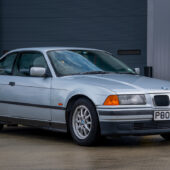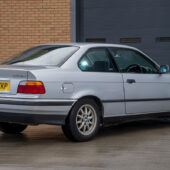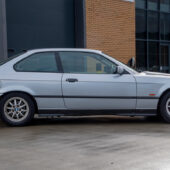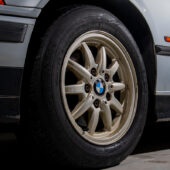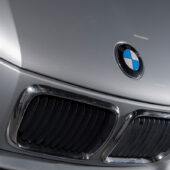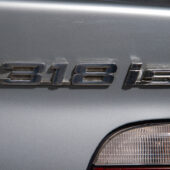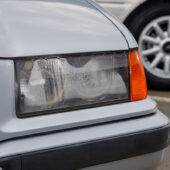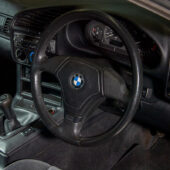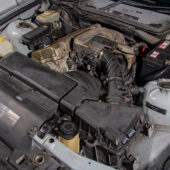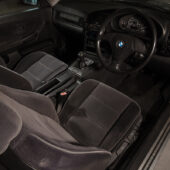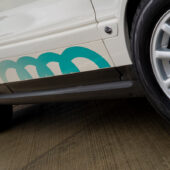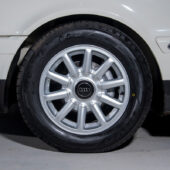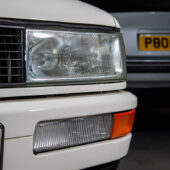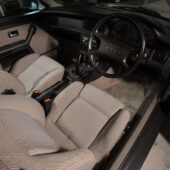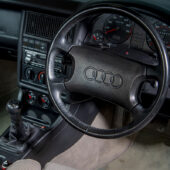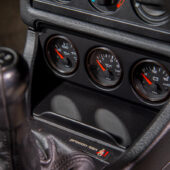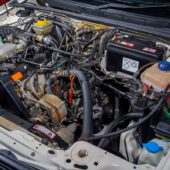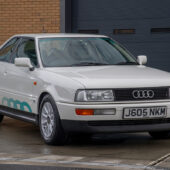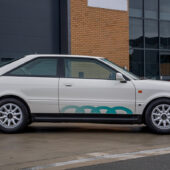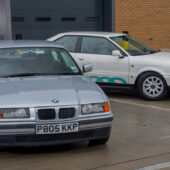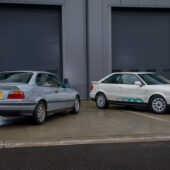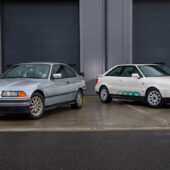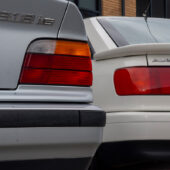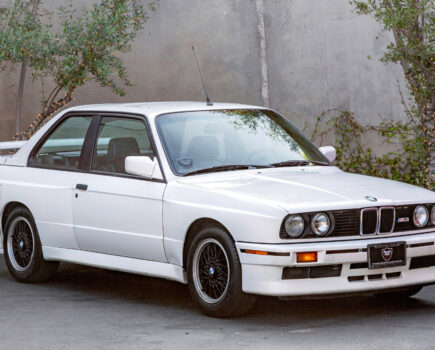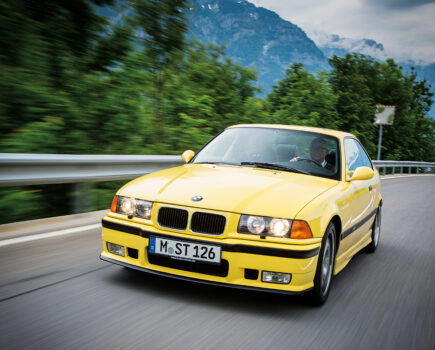The BMW 3 Series and Audi Coupé were major competitors in the 1990s – but which is the best modern classic today?
Words: Craig Cheetham Images: Matt Richardson
The late 1980s were a coming of age for the German car makers. Known for their quality from very early on, it was the decade of wealth-driven excess that truly put them on the map, with cars from the Porsche 911 through to the Mk2 VW Golf all earning a reputation for being premium offerings.
It was also a pivotal time for Audi. A brand initially considered as a ‘posh but dull’ premium Volkswagen, the company manged to reinvent itself with the Audi 80 ‘B3’. A car that, almost three-and-a-half decades since it first appeared, still looks handsome today. Its aerodynamic body, with flush fitting glass and lack of roof gutters, was one of the most streamlined and innovative designs of the Eighties and has withstood the test of time beautifully, while it also has a sense of being wonderfully over-engineered, in line with so many other German cars of the era.
It was hardly a sporty car though, so in order to put that right, Audi introduced a coupé variant of the B3 in 1988. It was initially powered only by a 2.3-litre five-cylinder engine, but was later fitted with the eight-valve two-litre powerplant that was common to loads of VW Group cars of the era and was dutifully reliable if lacking in performance.
To counter that, in 1990 Audi launched the turbocharged 2.2-litre S2, which was the first in a long line of S-badged Audis that completely transformed the brand’s performance reputation.
The 80 B3 was a good car regardless of body style, which also went on to include estate and cabriolet – a case of playing BMW at its own game. And as competitors to the the E30 3 Series, the initial B3 Audis had plenty of merit – more spacious, more modern and better equipped than the BMW, which was nevertheless riding high on a wave of public approval. The E30 was very much a car that defined ‘Yuppie’ Britain, and it was great to drive, too. But it was cramped and old-fashioned compared to the B3.
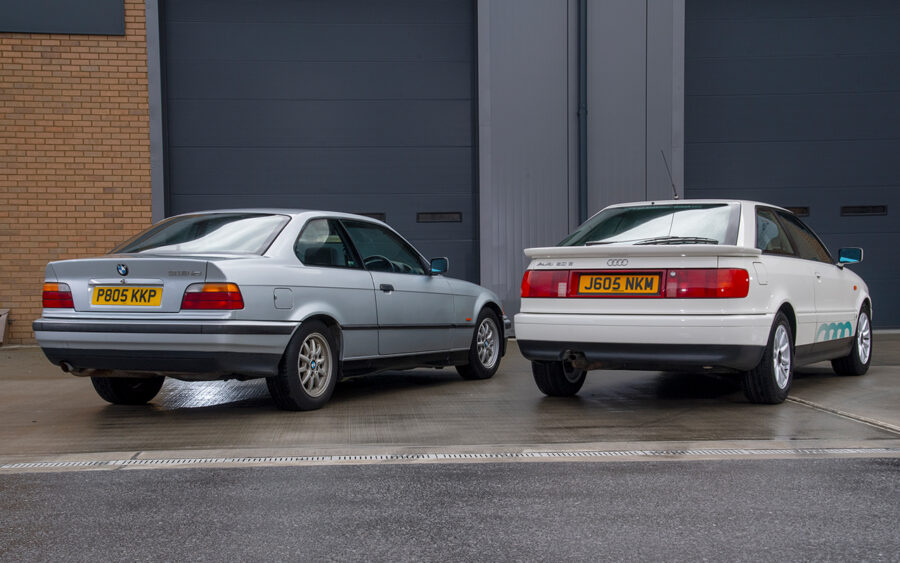
Enter, at the 1990 Paris Motor Show, the E36. The 3 Series for the thrusting 1990s. The new BMW retained the traditional rear-drive layout, but it was a bigger, more mature and more spacious car. Alongside the B3 Audis, it essentially created the ‘Compact Executive’ car market that’s so popular today, and it wasn’t long before BMW was branching out into other body styles as well as the saloon.
The two-door Coupé was available pretty much from launch, with estate and cabrio models coming later, along with the truncated ‘Compact’.
It was offered with a baffling array of engine choices, from the four-cylinder 316i to a 2.8-litre straight six, while it would also form the basis of the second generation M3 – a sporting halo for the brand.
In essence, the E36 Coupé was more of a driver’s car than the Audi as well – rear-wheel-drive, with a low-slung driving position and sleek, angular styling, it was a car with plenty of appeal – but for some the Audi’s discretion and neat detailing were preferable.
We brought smart examples of both together in the ultimate battle of the Bavarians – Munich vs Ingolstadt. But which is the best Retro German coupé today?
![]()
Both of these cars are typically German in their appearance – smart, yet reserved. Handsome without being overly flashy.
Of the two, it’s the BMW that’s the more classical coupé, with long flanks and large pillarless doors. The rear end tapers away to a rear that shares its tail lights and boot lid with the E36 saloon, yet does so in a wholly harmonious way. The two were designed side-by-side, so the Coupé wasn’t an afterthought.
The challenge is finding an example that hasn’t been modified, such as the 318iS here. It has never been messed with and still features the original, rather discreet 15-inch alloys it left the Munich factory with, whereas many E36 Coupés today have been lowered, fitted with oversized alloys and huge boot spoilers. There’s a big following for them, especially among the drift car community, and while we’re all for car culture, it’s a shame that so few original E36 Coupés survive – especially when they’re so pretty in virgin form.
The Audi is less angular and apparently less streamlined, though its drag coefficient suggests otherwise. It was one of the most aerodynamic cars of its era and still is today.
It has less of a classical coupé profile, though, partly down to the fact it’s a hatchback, whereas the BMW is a more traditional two-door coupé with a saloon back end.
![]()
That makes the Audi Coupé look short and a little dumpy by contrast, though it’s by no means unstylish. This example is 100% original and unrestored and has been garaged for most of its life, so even the side graphics are unspoilt. They may not be to everyone’s taste, but given this car’s originality they have to stay.
At the front – as with the BMW – the Audi Coupé is identical to the saloon on which it is based, but from the A-pillar backwards the whole car is different, with longer doors and a large glass area leading to a rounded rump. It’s a handsome car in its own way, but not as striking as the BMW.
The Audi Coupé is the most practical of the two cars here, thanks in no small part to its hatchback, which opens up to reveal a surprisingly shallow boot, but one that is nevertheless useful.
The BMW’s boot is vast, but access is difficult and the opening aperture too small for wider loads such as large suitcases.
But these are trivial consideration in the context of buying these cars today and it’s the experience from behind the wheel that is likely to be more relevant to the buyer in 2020.
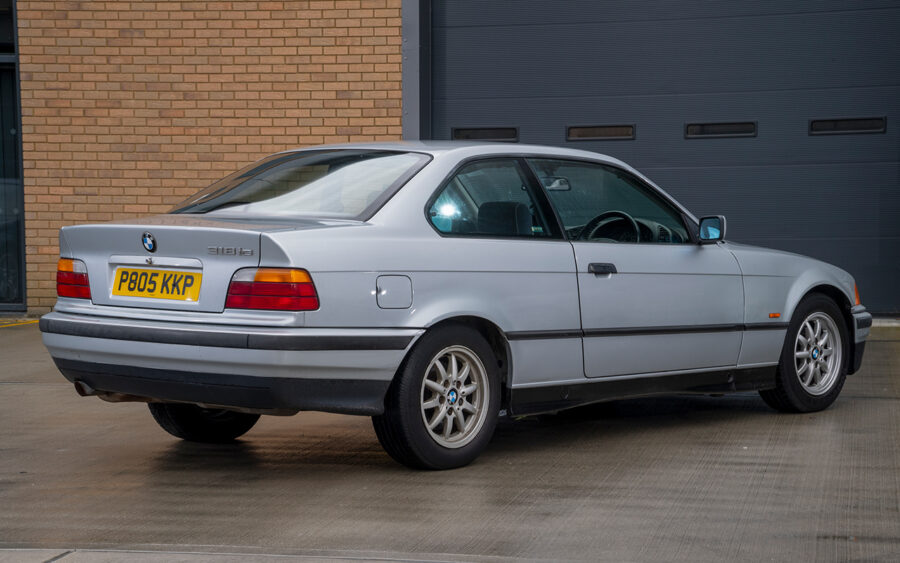
It’s also another area where these two two-doors are totally different in character. The BMW is lean and low, with wide opening doors and squat driving position that favours long legs. The steering wheel is adjustable for rake and the driving position is natural, though access can be tricky and parking in tight spaces can be a nightmare due to the length of the doors.
The Audi Coupé is more intuitively comfortable, but it lacks the sense of sportiness found in the BMW, which feels much more like the driver’s car it was heavily marketed as.
Yet this isn’t to say it’s bland. The seats are supportive and well-bolstered, the controls chunky and well-made. And the electric window switches (whisper it…) are still found in some VW Group cars today so there can’t be much wrong with them. It’s a classy cabin and one that feels like it will last forever.
Both work best as four rather than five-seaters, but the BMW has more space in the back – the contrast being that the Audi’s rear seats are easier to get in and out of.
Both of these cars feature four-cylinder engines, but it’s the BMW that’s by far the more lively thanks to the 318is variable valve timing and 16v head, which help it to deliver 140bhp from its 1.8-litre engine compared with the Audi’s 113bhp, with the 80 requiring an additional cylinder to get near the BMW’s power output.
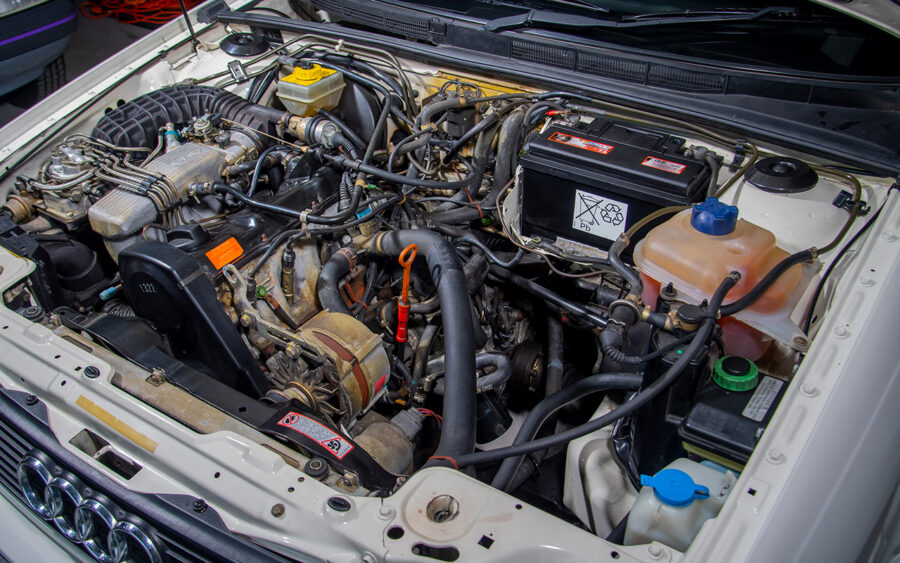
Yet while it feels leisurely, the 2.0-litre engine in the Audi Coupé is both tractable and torquey – it doesn’t feel especially quick. But nor does it feel disastrously slow – it’s typical of the 2.0-litre engines found in most saloon cars of the era, and if you wanted something a bit livelier then there were other options in the model range. As an all-rounder that’s more about looking good than going quickly, it ticks all the boxes and is also simplicity itself to maintain. The engine is proven to be reliable and long-lived and is gloriously straightforward.
The BMW, meanwhile, is a different proposition. Its 16-valve engine is livelier and more powerful, yet at the same time it likes to be used more across its rev range. Indeed, it’s the Audi that’s the more tractable and responsive in traffic.
Show the cars an open road, however, and the tables turn quite significantly – the BMW’s additional power is instantly noticeable, while its organ-style accelerator pedal and long-throw gearbox are typical 3 Series traits. It’s a wonderful, mechanical feel that no other manufacturer has ever managed to replicate and gives the coupé a much more sporting feel than its rival, which doesn’t feel any different to a B3 saloon to drive. That’s no bad thing, it’s just that the BMW has a much more sporting feel – as you’d expect given its extra power.
There can only be one winner in the handling stakes and that’s the BMW – its rear-drive chassis has a fluidity and level of grip that the Audi can only dream of. The E36’s trademark Z-Axle, which gives a fully-independent multi-link rear end and a sense of passive rear-steering, gives the chassis a wonderfully dynamic feel, while the steering is perfectly weighted, albeit a little numb around the straight-ahead position.
The Audi Coupé, by contrast, is much less engaging to drive. It has a sturdy, solid feel and never feels unbalanced or unstable, but the steering is short of feel and the ride a little coarse.
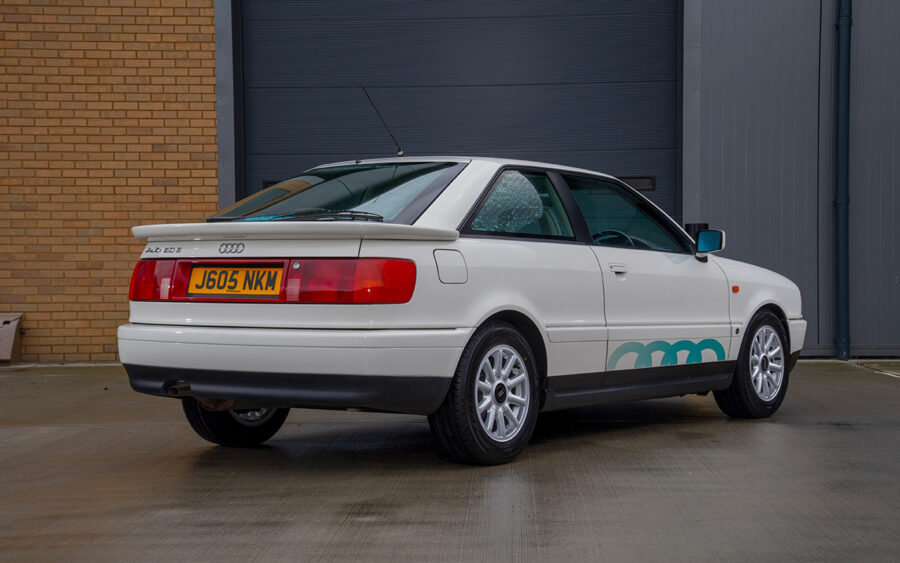
It has a real feel of solidity to it and is a perfectly pleasant car to drive – just not a wholly engaging one.
Both of these cars hark from an ear where the Germans were renowned for quality engineering and absolute dependability. So the good news is that they both fit the brief, with powerplants that are capable of substantial mileages and which generally require little more than regular servicing to keep them in good fettle.
The BMW is the fussier of the two – the top end can suffer from rattling cams and worn cam lobes, which can lead to excessive oil consumption. The engine itself is quite heavy and can wear out the engine mounts, leading to a horrible vibration when taking up drive.
The Audi’s 2.0-litre engine, meanwhile, is a thoroughly proven unit that has seen life in many VW Group cars over the years and was still in production as recently as 2005. It’s basic, simple and an absolute doddle to maintain, with most service items available off-the-shelf. Keep on top of cambelt changes and it’s unlikely to give you any major headaches at all, while still returning decent fuel economy of around 32mpg. It’s never going to set the world on fire, but it won’t burn you in the pocket either.
Spares back-up and support is pretty good for both cars, although some trim parts for the Audi are now getting scarce. For the E36, almost everything is still available, though it won’t be cheap if you have to procure it via a main dealer.
Both are eligible for classic car insurance and providing they’re not heavily modified (likely with the BMW, less so with the Audi) you’ll not have any trouble getting a decent price.
Fuel economy for both is reasonably good: around 30mpg for the BMW and a little better for the less-powerful Audi, and both on a par with similar cars of the era.

BMW 318is vs Audi Coupé: our verdict
So which of these two is the one we’d want to own most? Well, in many ways it’s the Audi that’s the more intriguing car. It’s the leftfield choice; a coupé that was never overtly sporty (S2 excepted) but which was beautifully and stylishly executed.
The E36, on the other hand, is the more mainstream, more common and more popular, all of which count against it in the curiosity stakes. But it manages to shrug all of that off by being a very good car – and that, for many, will be what makes the decision.
The BMW wins on merit, but the Audi Coupé is arguably the more interesting car.


